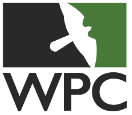
Project Details
Project Title: Eastern Massasauga Recovery at Ojibway Prairie
Funding Recipient: Wildlife Preservation Canada
Funding Awarded: $75,000 over 3 years
Project Partners: 8Trees Inc., Essex Region Conservation Authority, Laurentian University, Nature Conservancy of Canada, Ojibway Nature Centre (City of Windsor), Ontario Parks, Scales Nature Park/Georgian Bay Turtle Hospital, Toronto Zoo, and University of Windsor, Town of LaSalle
Targeted Species at Risk: Massasauga rattlesnake
Project Status: Ongoing (Three-year duration, 2021-2023)

Project Summary
Over the last 40 years, Eastern Massasauga rattlesnakes (Sistrurus catenatus) have become increasingly threatened across their Ontario habitat range. The Ojibway Prairie population of Massasaugas, located in southwestern Ontario’s Carolinian region, has experienced a serious and steep decline in distribution and abundance and is in imminent threat of extirpation if conservation and management measures are not implemented.
Kicking off a three-year contribution agreement with Ganawenim Meshkiki, Wildlife Preservation Canada was allotted $75,000 of Eastern Georgian Bay Initiative funding over 2021 to 2023 to advance the Ojibway Prairie Reptile Recovery Program (OPRREC). OPRREC’s goal is to recover the Ojibway Prairie Massasauga rattlesnake population while providing benefits to other reptile and plant species and species at risk (SAR) that call the area home. Over the course of 2021, the OPRREC team worked to develop reintroduction techniques for the Ojibway Prairie population and implemented actions to ensure feasibility of those efforts, including protecting and improving existing habitat, increasing habitat connectivity, and mitigating the threat of road mortality and human persecution. Importantly, these actions benefit both Massasauga rattlesnakes as well as other plant and reptile species and SAR within the region. Concurrently, the OPRREC team worked to increase the size, diversity, and productivity of the Massasauga captive breeding population to ensure availability of snakes for future reintroduction in the region, when feasible.
Specific project highlights included:
Habitat Enhancements:
- Removal of 151.1 kg of invasive plants,
- Herbicide treatment of 1.14 ha of the invasive European Common Reed (commonly known as Phragmites),
- Creation or enlargement of 40 woody debris features, and
- Removal of 1480 kg of garbage and litter
Collaboration and Advocacy:
- Provided support for 9 distinct threat mitigation or habitat protection projects including: ecopassages, traffic calming measures, barrier fencing, trail impact assessments, land acquisitions, new designations, and new land protections.
Education and Outreach:
- Reached over 540 people via targeted outreach, meetings, and conference presentations,
- Contributed 11 blogs/articles and 52 social media posts,
- Generated 8 mainstream media mentions, and
- Published one peer-review study
Collection and Transfer:
- Collaborated on the legal collection and transfer of 37 Massasaugas from three different Ontario districts to the captive population held at Toronto Zoo and its partner facility.
New Holdings:
- Created over 20 new Massasauga holdings at a Toronto Zoo partner facility.
Research and Development:
- Coordinated with various partners to secure and artificially hibernate 12 Massasaugas at Ojibway Prairie in an effort to test future release sites for population augmentation.
Reporting:
- Summarized progress made over the previous 5 years to increase feasibility of recovering the Ojibway Prairie population of Massasaugas.
Together, this work contributed to maintaining, connecting, and protecting Massasaugas as well as Eastern foxsnake and Butler’s gartersnake habitat in the Ojibway Prairie region. Additionally, the project activities and findings contributed to a better understanding of the distribution of SAR reptiles, the effectiveness of threat reduction approaches, and reaffirmed the necessity of long-term monitoring as a key component to improving approaches to species recovery.
Project efforts scheduled for 2022 include plans to work with First Nations communities within the Massasauga rattlesnake range in Eastern Georgian Bay to collect snake Traditional Ecological Knowledge (TEK), facilitate intergenerational knowledge transfer through the development of Snake TEK engagement sessions, and more broadly, create space and capacity for Indigenous groups to lead, coordinate, and participate in snake recovery initiatives using a Two-Eyed Seeing approach. Other efforts planned for 2022 include continued work with partners at captive breeding facilities and continued data collection, processing, analysis, synthesis, and reporting to support various aspects of Massasauga conservation.
2021 Project Presentation

Further Details
For more information on the Ojibway Prairie population of Massasaugas, please visit the links below.
Ojibway Prairie Reptile Recovery
Wildlife Preservation Canada
Ojibway Nature Centre – Eastern Massasauga rattlesnake
